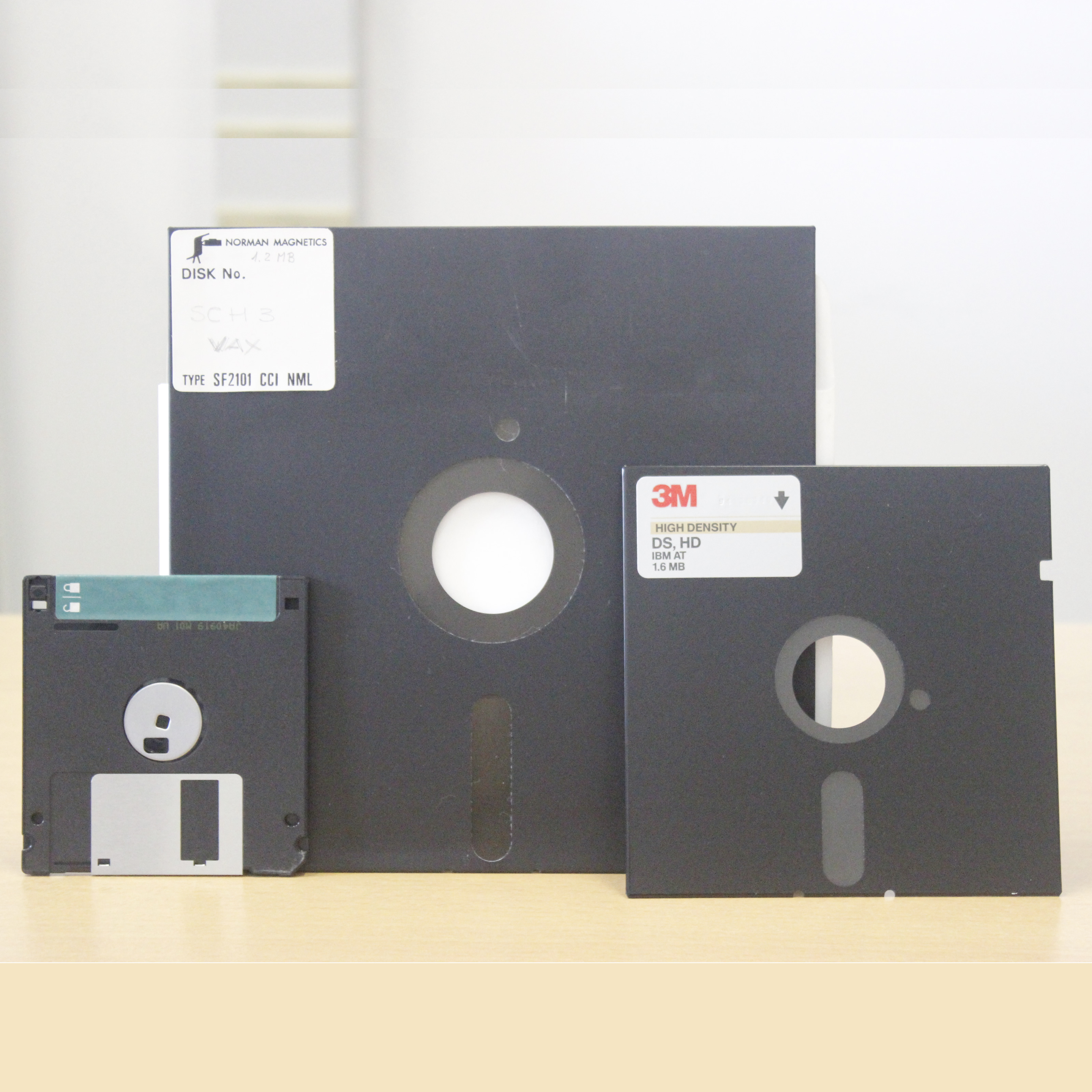
5.25-inch floppy disks (over 13 cm per side), also called "mini floppy disks", also known as "minifloppy", are the result of an evolution of the original 8-inch floppy disks, invented and spread initially by Shugart and Wang Laboratories.
Comunemente detti floppy (in inglese diskette, nome volutamente scelto per essere simile alla parola cassette), erano diffusissimi negli anni Ottanta, usati su piattaforme di home e personal computer come l’Apple II, il Commodore 64 e il PC IBM al fine di distribuire software, trasferire dati tra più calcolatori, fare piccoli backup o comunque salvare dati da riutilizzare. Prima che i dischi rigidi divenissero popolari sui PC, i floppy disk erano spesso usati per memorizzare anche il sistema operativo dei PC, il software applicativo e altri dati. Molti computer domestici avevano il kernel primario del proprio sistema operativo memorizzato permanentemente in una memoria ROM, ma il resto del sistema operativo era su un floppy disk che doveva essere inserito ogni volta che si accendeva l’elaboratore, sia che si trattasse di un sistema proprietario, sia di CP/M, sia, più tardi, del DOS.
Insights
From a technical standpoint, 5.25-inch disks and floppy drives function essentially the same as 8-inch models, except for the smaller size.
There were three types of disks (capacities refer to formatting with MS-DOS a FAT file system):
• Single sided, 160 kB formatted capacity (used on IBM PC)
• Double sided, 360 kB formatted capacity (Used by IBM XT and compatible systems)
• Double sided, 1200 kB formatted capacity (used on IBM AT and later)
The drives supplied with many home computers, such as the Commodore 64's 1541, were of the single sided type and did not use the sync hole. In order to use the second side of the disc it was necessary to make a second “notch” on the edge of the disc to enable writing on the second side. The intervention was achievable in a few seconds with a common pair of scissors, but there was still a thriving market for specific instruments, called disk notchers. The modified floppies were called flippies. Obviously it was necessary to remove the floppy from the drive and reinsert it upside down to exploit the second side, but the savings were considerable.